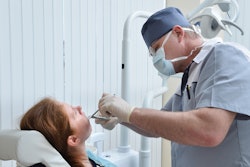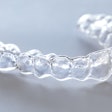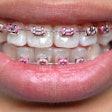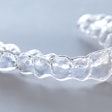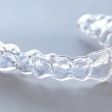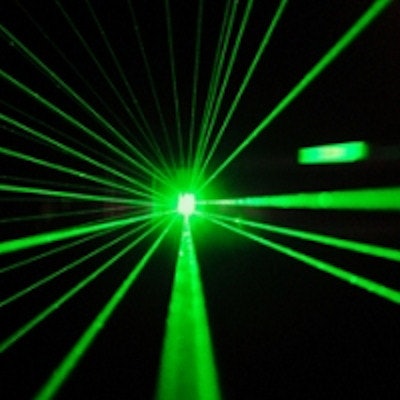
Dental crowding is an issue in much of the U.S. population, but lengthy treatment time leads some patients to dismiss leveling and alignment treatments. Low-light laser therapy may be a safe method to speed up the process, according to a new study.
The need to find a way to accelerate orthodontic treatment isn't new, but using a laser to do so hasn't been part of a randomized controlled trial until now.
Researchers from Syria wanted to see if using a low-light laser reduced the amount of time to complete tooth movement, compared with a control group that did not receive laser treatment. Their results were published in the Angle Orthodontist (November 21, 2016).
"Recent systematic reviews stated that there is a lack of evidence regarding [low-light laser therapy's] effectiveness in accelerating orthodontic tooth movement," wrote lead study author Mohammed Moaffak A. AlSayed Hasan and colleagues. They added that there is a need for well-designed randomized control trials to determine the best protocols for laser treatment and present recommendations about its effects.
Hasan is a master's degree student in the department of orthodontics and dentofacial orthopaedics in the Faculty of Dental Medicine at Damascus University.
Frequent laser treatments
Almost 80% of people in the U.S. have some degree of incisor irregularity, and fixing this irregularity (leveling and alignment) may take eight months in more extreme cases. Length of treatment time is often cited by patients as a reason for declining treatment, according to the study authors. While previous research has looked at surgical, mechanical, and physical methods at speeding up the process, this is the first randomized controlled trial to see if laser treatment is effective.
The study included 26 patients between the ages of 16 and 24. To be selected for the study, the patients had to have all maxillary permanent teeth except third molars and have only moderate crowding (tooth-size–arch-length discrepancy of 3 mm to 5 mm) in the anterior maxilla with Little's Irregularity Index value of 7 mm or more, indicating extraction of two first premolars. In addition, it had to be feasible to have bonding brackets on all their maxillary teeth, and they had to have had no previous orthodontic treatment or systemic diseases and have good oral hygiene.
All patients underwent conventional orthodontic treatment with a fixed appliance. The patients were randomly divided into two groups: one group underwent additional laser treatment, and the other did not and served as the control group. Patients in the laser group received a low-light laser dose from an 830-nm wavelength gallium-aluminum-arsenide semiconductor laser device with energy of 2 Joules/point. The dose was applied to each patient's maxillary incisor's root at four points: two buccal and two palatal. Laser treatment was repeated on days 3, 7, 14, and then every 15 days starting from the second month until the end of the leveling and alignment stage.
The authors noted that their primary outcome measure was the overall time needed for the completion of leveling and aligning the maxillary dental arch. This was done by taking a maxillary alginate impression for study casts at four points:
- T0 was before insertion of the first archwire
- T1 was one month after treatment started
- T2 was two months after treatment started
- T3 the end of the leveling and alignment stage
As the tables below show, the leveling and alignment time was shorter for the laser group (table 1); however, both groups ended up with nearly the same results at completion of treatment (table 2).
| Table 1: Overall leveling and alignment time (days) | |||
| Group | Minimum | Maximum | Mean |
| Laser (n = 13) | 57 | 106 | 81.23 |
| Control (n = 13) | 85 | 141 | 109.23 |
| Table 2: Overall leveling and alignment improvement (%) | |||
| Group | At T1 | At T2 | At T3 |
| Laser (n = 13) | 69.41 | 89.42 | 94.24 |
| Control (n = 13) | 48.85 | 71.7 | 94.2 |
Weekly patient observation
The authors noted that it was difficult to get the same Little's Irregularity Index values for all 26 patients when the study began. To overcome this limitation, they used each patient's improvement percentage instead of index values. They also noted that controlling for all variables in leveling and alignment is difficult, at best. The researchers attempted to deal with this limitation by recruiting patients with a "close amount of initial crowding," standardizing the patients' wire sequence, and seeing patients weekly, the authors wrote.
However, they concluded that low-level laser therapy for these patients is helpful.
"Low-level laser therapy, used within the described parameters, is an effective method for accelerating orthodontic tooth movement in dental crowding cases," the authors wrote.




